
Operators in Python
Operators in Python are fundamental components of Python programming that developers can use to perform various operations on data and variables. Operators act as tools to combine or create custom-made expressions, playing crucial role in creating logic, algorithms, and data handling mechanisms. If you want your programming code to be both efficient and meaningful, then you should have a good understanding of whole concept of wide variety of operators in Python. In the lecture, live coding is going to be a part that showing examples of different operators in Python is one of the main strengths. Through this interactive demonstration, learners will have hands-on experience with code writing, logical work through of the code as well as a visual representation of operations that were executed on the variables and the data structures.
- Arithmetic Operators:
Definition: Arithmetic operators perform mathematical operations like addition, subtraction, multiplication, and division.
Working and Code Example:
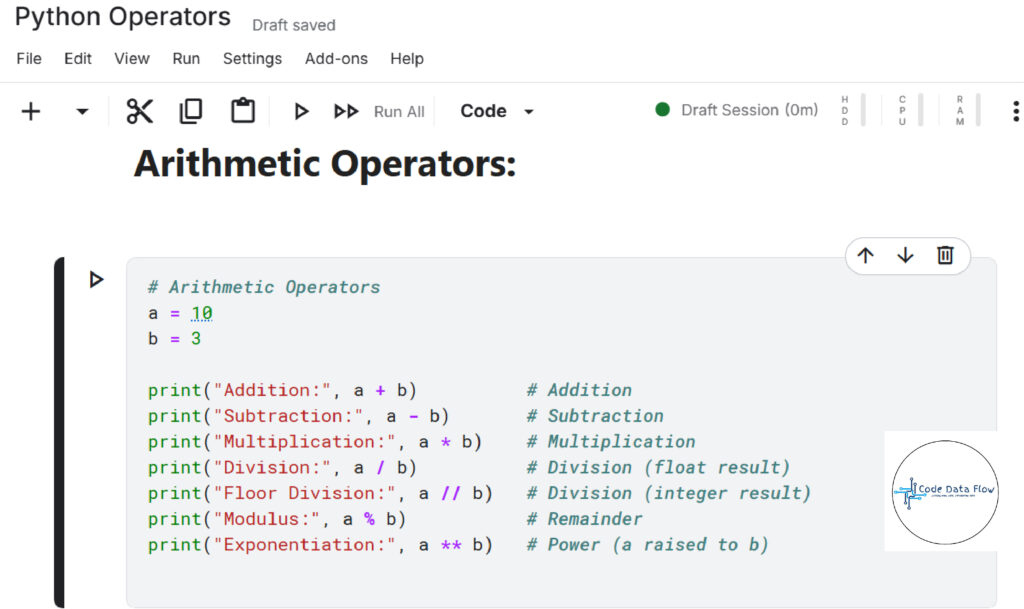

- Logical Operators:
Definition: Logical operators are used to combine conditional statements.
Working and Code Example:
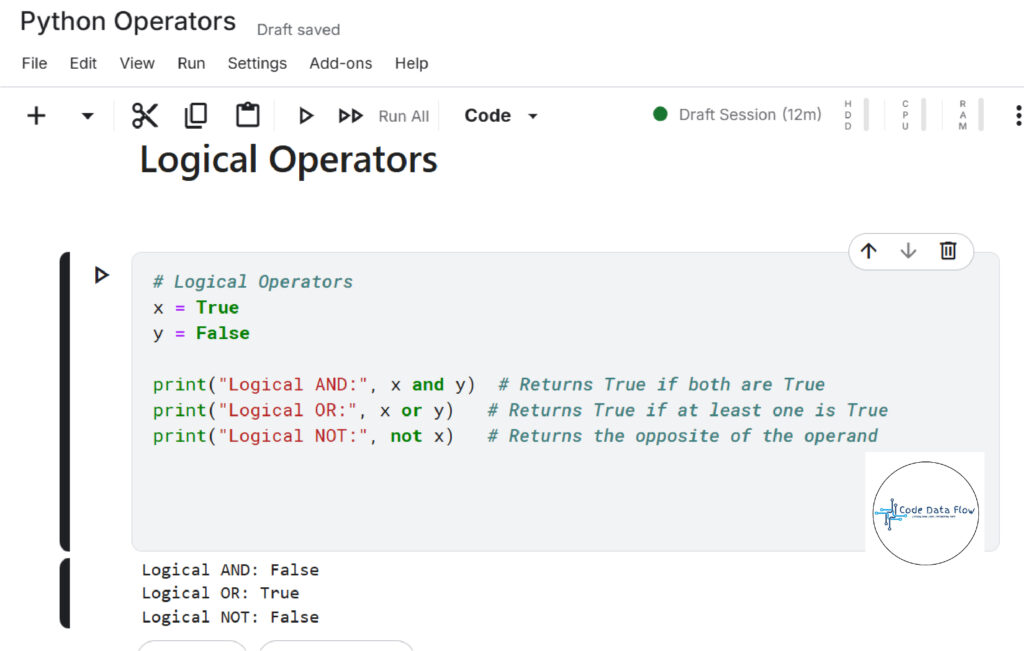
- Identity Comparison Operators:
Definition: Identity operators are used to compare objects to check whether they are the same object in memory.
Working and Code Example:
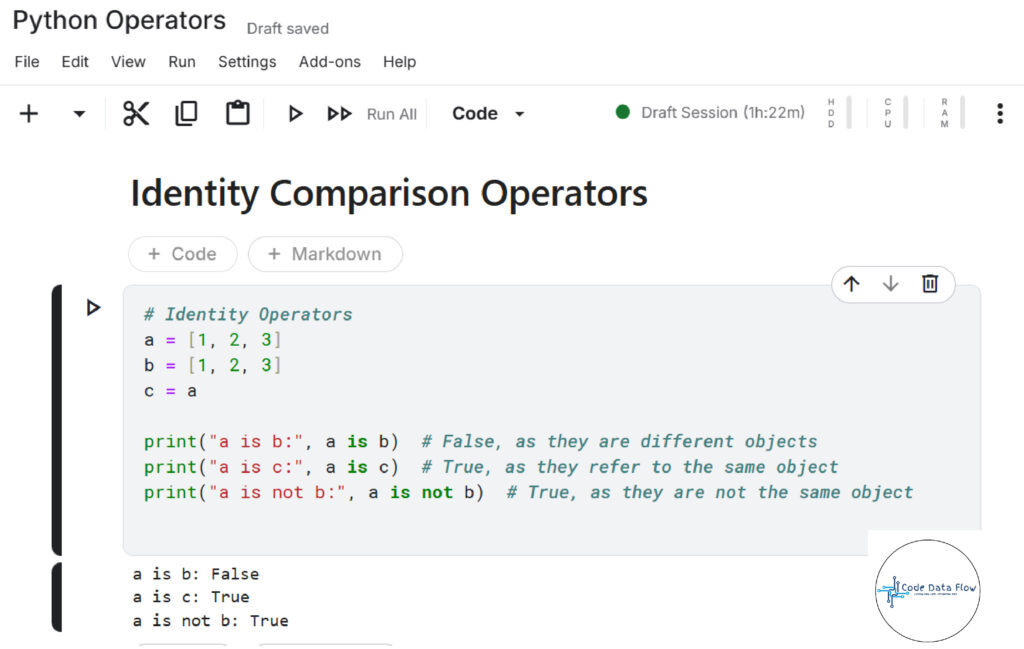
- Membership Test Operators:
Definition: Membership operators are used to check whether a value or variable is found in a sequence (string, list, tuple, set, or dictionary).
Working and Code Example:
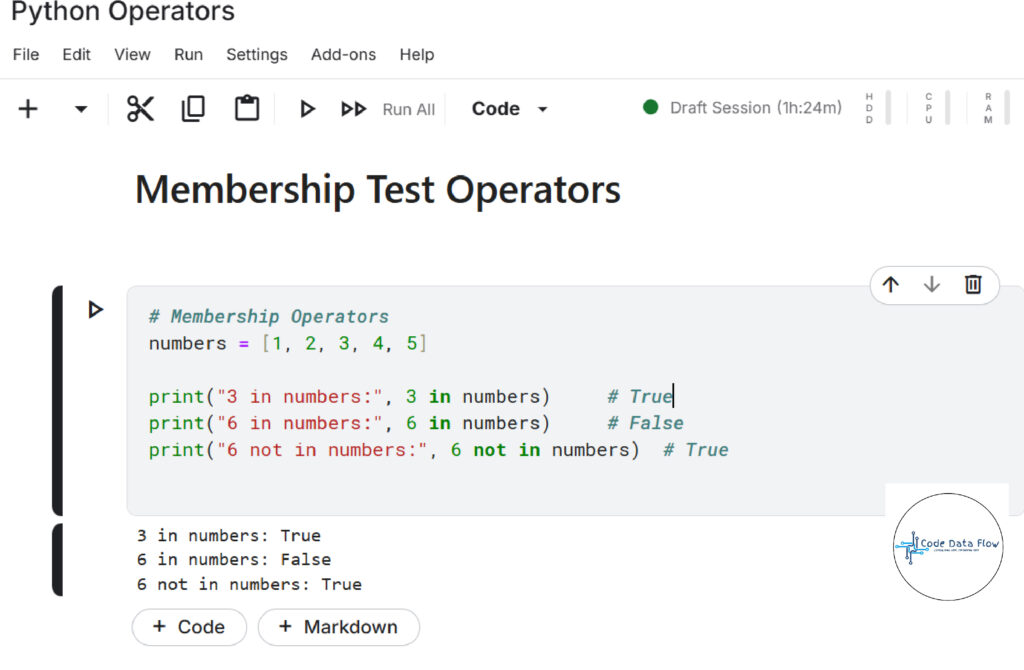
- Bitwise Operators (Part 1):
Definition: Bitwise operators perform operations on binary representations of integers.
Working and Code Example:
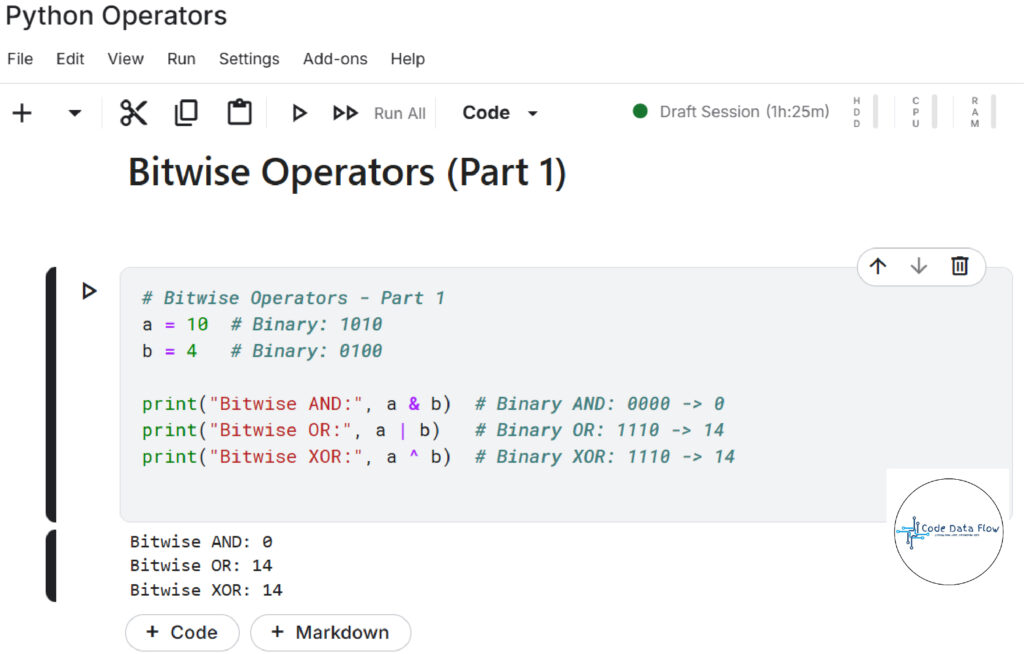
- Bitwise Operators (Part 2):
Definition: Bitwise operators also include bit shifts that move bits left or right.
Working and Code Example:
